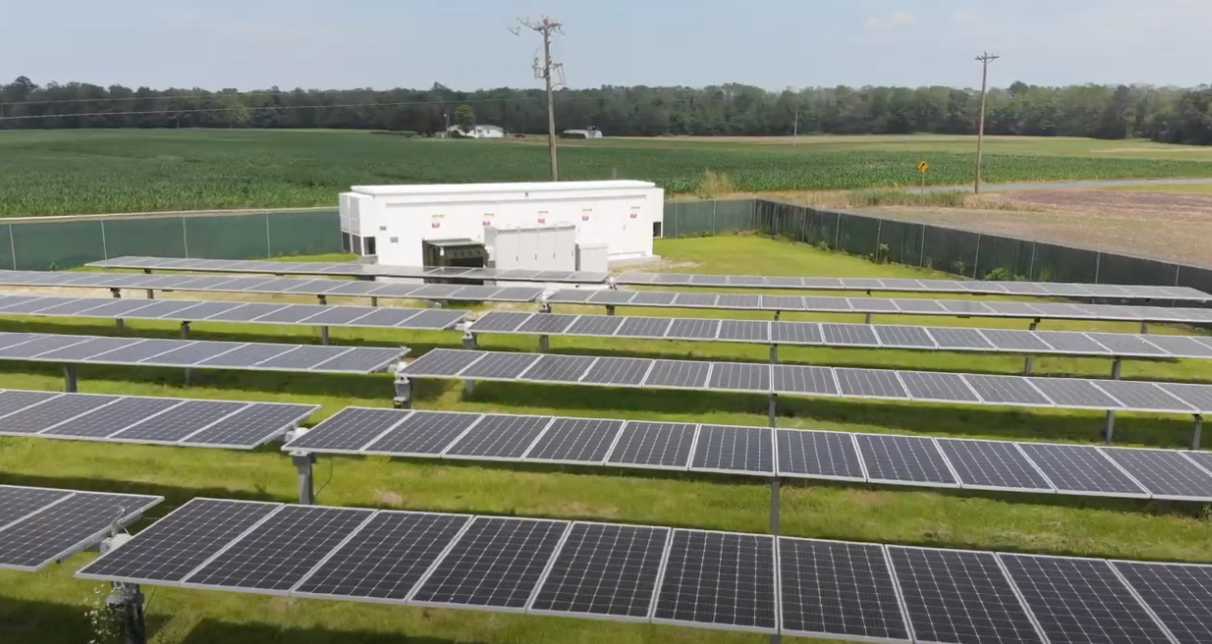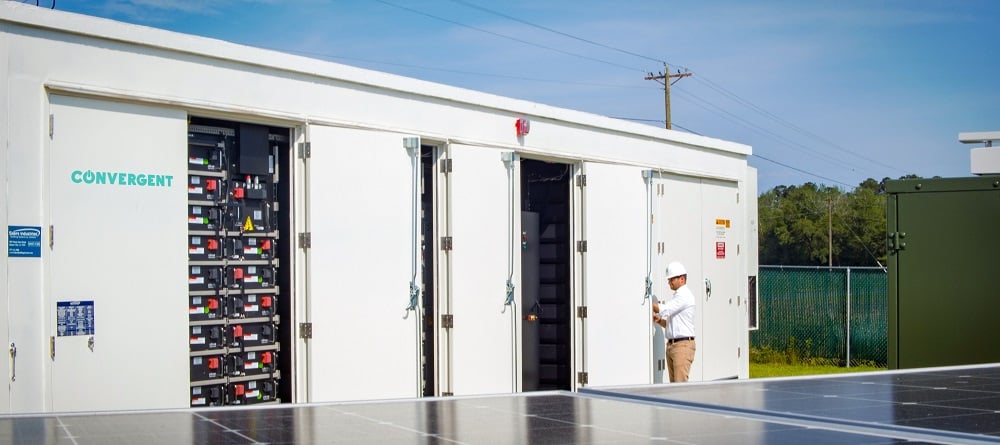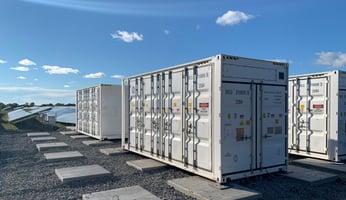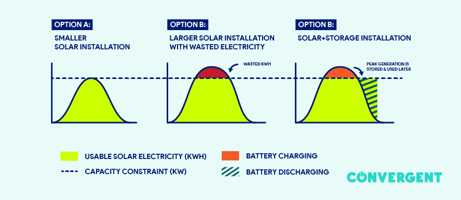How Colorado Utilities Can Lower Wholesale Energy Costs and Emissions with Battery Storage and Solar PV

Colorado’s utilities are on the front lines of the state’s clean energy transition, and increasingly turning to renewable energy solutions to lower wholesale costs, reduce emissions, sustainably increase local capacity, and meet 2040 climate goals.
Natural resources are critical to many industries in Colorado, and the way of life. That is one of the reasons that the state has bold clean energy targets and a Roadmap to 100% Renewable Energy by 2040. While roughly one-third of the United States still relies on coal as a primary energy generation source, Colorado has taken the initiative to address two large sources of emissions—the power sector and transportation—by working with utilities and communities to transition to 100% clean electricity generation by 2040 and rapidly expand vehicle electrification.
In this blog post, we will cover how renewable energy systems—including battery storage and solar photovoltaics (PV)— are critical to Colorado’s clean energy goals. We’ll also explore how these systems can reduce wholesale energy costs, support local capacity needs, and enhance grid reliability.
Colorado’s Progress Towards its Clean Energy Goals (Spoiler: Congrats!)
In May 2019, Governor Polis unveiled the administration’s Roadmap to 100% Renewable Energy by 2040 and Bold Climate Action. The roadmap outlines Colorado's goals, policies, and actions to integrate renewable energy systems and reduce greenhouse gas (GHG) emissions, which are essential for preserving Colorado's way of life and are central to the Colorado Energy Office's mission of ensuring a statewide transition to clean energy.

Today, Colorado is ahead of its own targets of eliminating 80% of GHGs from power generation by 2030. Further, Colorado has increasingly competitive prices for wind and solar generation, which continue to trim the use of coal, according to the U.S. Energy Information Administration (EIA).
The EIA projects coal’s share of electricity generation dropping to 8% by 2050, while renewables rise to 44%, more than double the present share.
This is great news—but it can create a challenge for utilities experiencing load growth while also managing more and more intermittent resources like solar and wind.
How Utility-Scale Renewable Energy Systems Can Support Clean Energy Goals
Historically, power on the grid has flowed in one direction (from generation to transmission to distribution to customers) but with more and more customers producing their own power, i.e., solar panels at businesses or residences, power is now flowing in multiple directions. The grid was not built for this. Nor was it built for the proliferation of extreme weather events produced by climate change.
Renewable energy systems—including energy storage and solar PV—have a critical role to play in Colorado’s transition to 100% clean electricity generation by 2040; energy storage in particular is the ‘backbone’ of a more sustainable and reliable electric grid.
Energy storage systems allow electricity to be stored—and then discharged—at the most strategic times. Today, Lithium-ion batteries, the same batteries that are used in cell phones and electric vehicles, are the most commonly used type of energy storage. Like the batteries in your cell phone, utility-scale battery energy storage systems can be charged with electricity from the grid, stored, and discharged when there is a deficit in supply or when energy is most expensive.
When battery storage is paired with solar PV (known as solar-plus-storage), utility-scale batteries can utilize solar energy whether or not the sun is shining.

Solar-plus-storage can extend the value of solar energy by providing reliability to your community’s energy capacity needs. Pairing solar PV with battery storage can also be an essential cost-saving tool by capturing additional solar energy during certain times when electricity rates are low and discharging it during times when electricity rates are high.
Utilities are adopting battery storage and solar-plus-storage in growing numbers. The combination of solar arrays and utility-scale batteries provides a flexible, proven, multi-use solution to meet the grid’s 21st-century challenges, accelerating the clean energy transition.
Further, energy storage, or solar-plus-storage, can provide big benefits for the broader grid. It can bank excess power from renewables for when demand spikes, enabling renewable facilities to function more like traditional power plants. And the discharge of the electricity from batteries is nearly instantaneous, providing an attractive degree of flexibility for grid operators who have to match electric demand and supply in real-time. On the distribution system, it can be deployed to defer major capital projects, support increased localized peak loads, provide resilience and emergency backup, and save customers money.
Third-party-owned solar-plus-storage solutions put utilities in control of always-on clean power resources while providing a reliable partner for the day-to-day operations and maintenance, enabling your utility to keep focusing on what you do best.
Next Steps: Your Battery Storage or Solar-Plus-Storage System
If your utility is looking for a cost-effective way to increase the amount of renewable energy on the grid while boosting reliability, you’re halfway there. But what’s next?
Convergent Energy and Power (Convergent) is a leading provider of energy storage and solar-plus-storage systems across North America. For over a decade, we’ve gained experience and expertise, working closely with utilities to take the hassle out of renewable energy solutions by building, owning, and operating systems on their behalf. We’re proud to say that it has never been easier to integrate renewables into your organization and the time has never been better.

For the majority of our customers, Convergent finances, designs, and owns the battery storage system on their behalf, a model referred to as a “storage capacity agreement.” For these customers, the battery system reduces costs for members or ratepayers starting on day one and requires no capital outlay.
As you know, there’s no better time to get started and “future-proof” your utility—and community. In addition to the benefits to your utility’s capacity, reliability, and sustainability, energy storage can support the health of your community and the natural environment, provide access to lower-cost clean energy resources, and create clean energy jobs. It’s truly a win-win.
If you’re interested in learning more about how energy storage (with or without solar generation) can benefit your utility, please contact us today for a free, customized evaluation.
Lisa Katz is Vice President of Utility Origination at Convergent Energy & Power. Lisa has over 15 years of experience working closely with global and domestic businesses and utilities to reduce their energy cost and carbon footprint. Her unique blend of experience includes sales management, public policy, business strategy, marketing, and project management in diverse markets that span power generation, combined heat and power, biogas, renewable natural gas, hydrogen and environmental controls.





